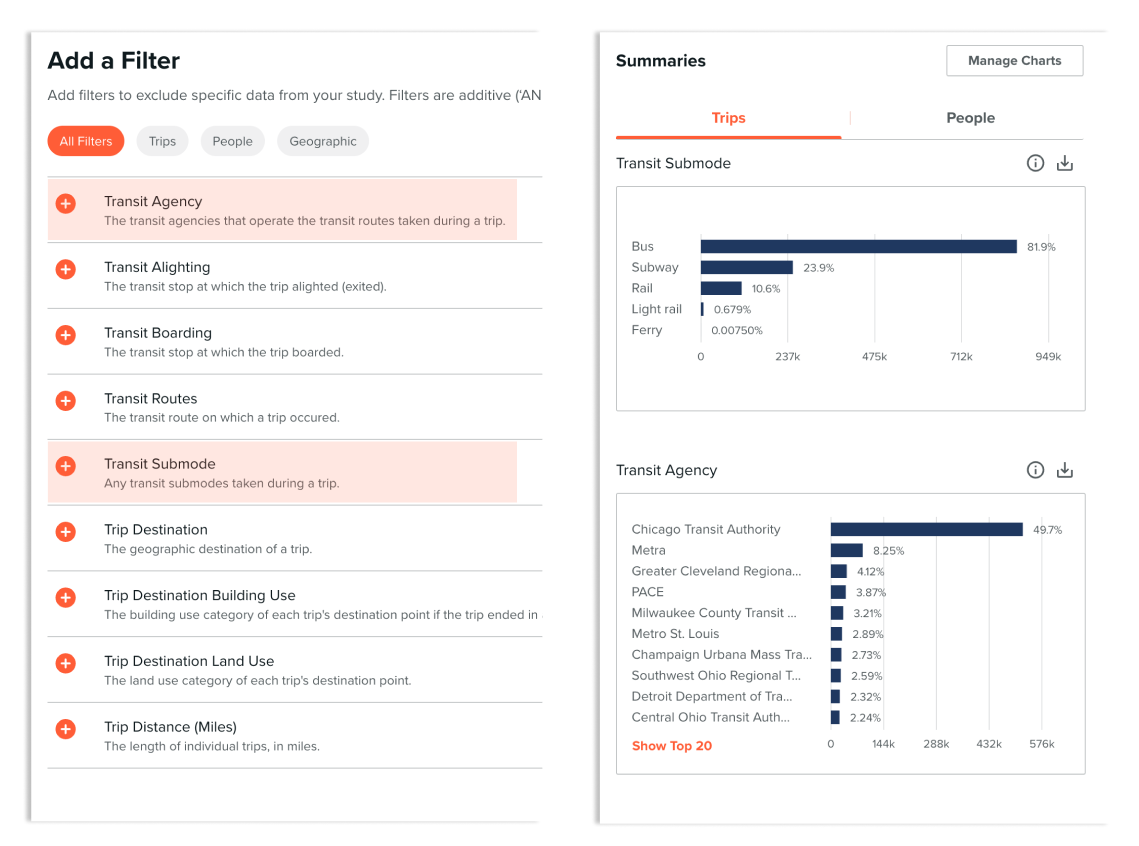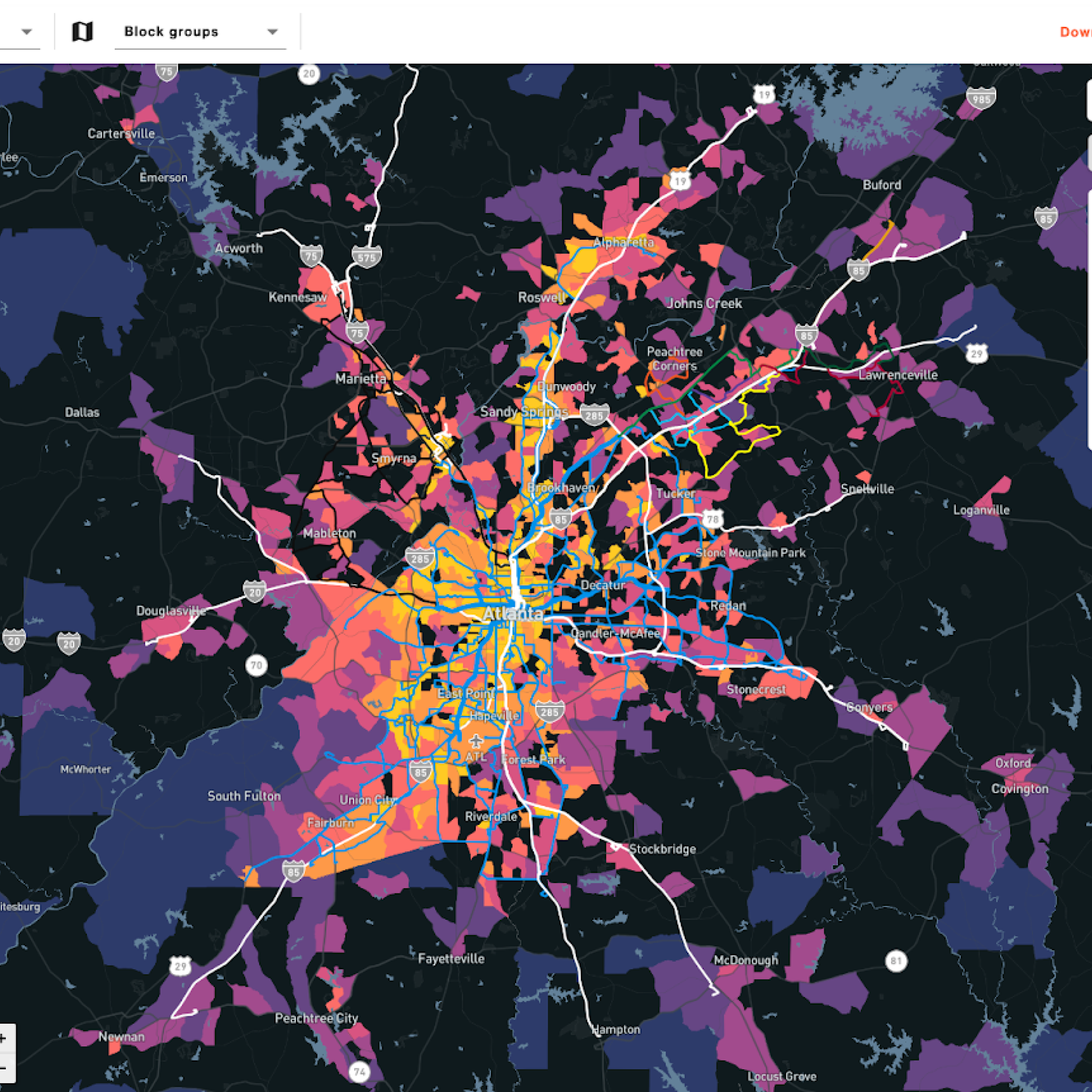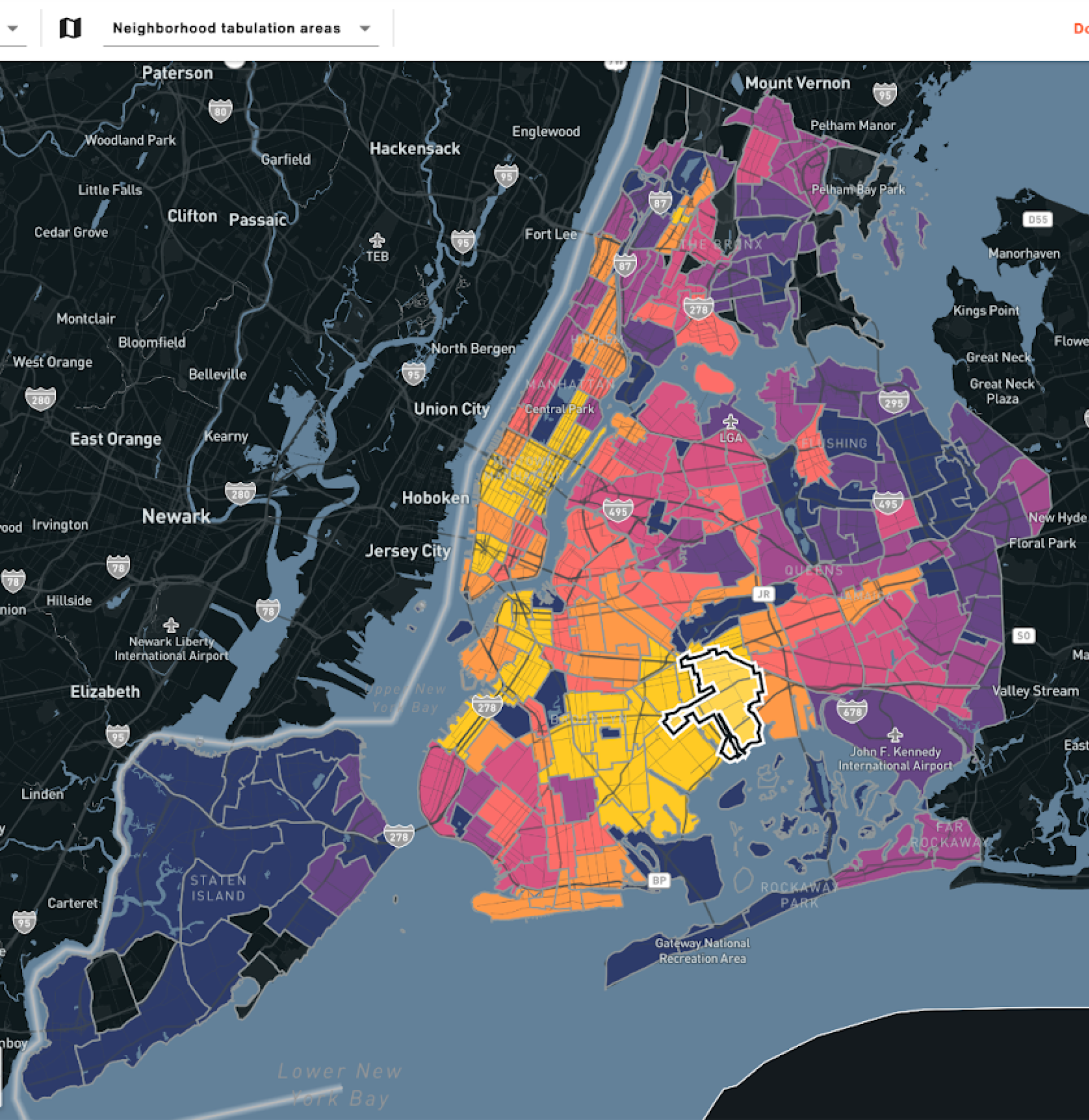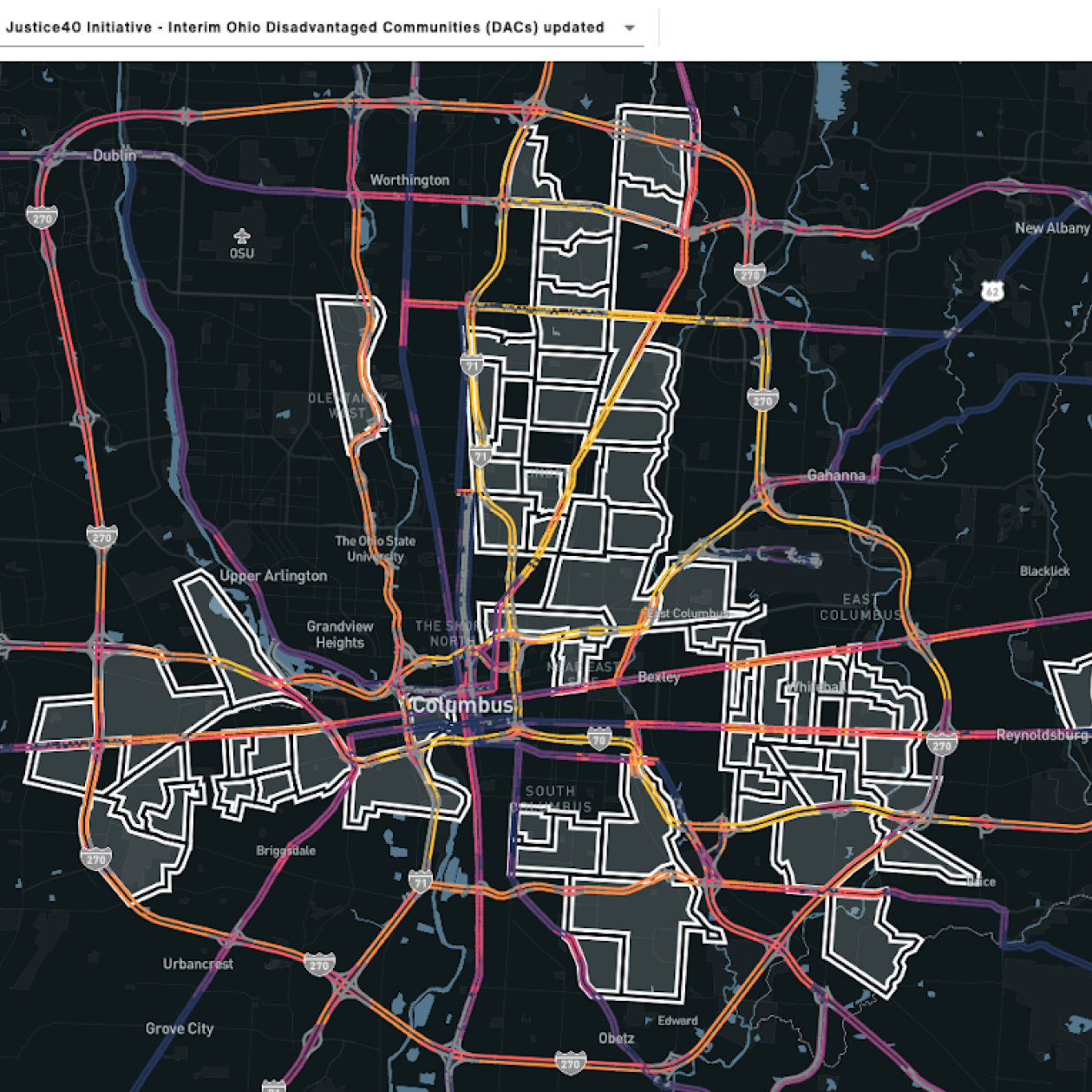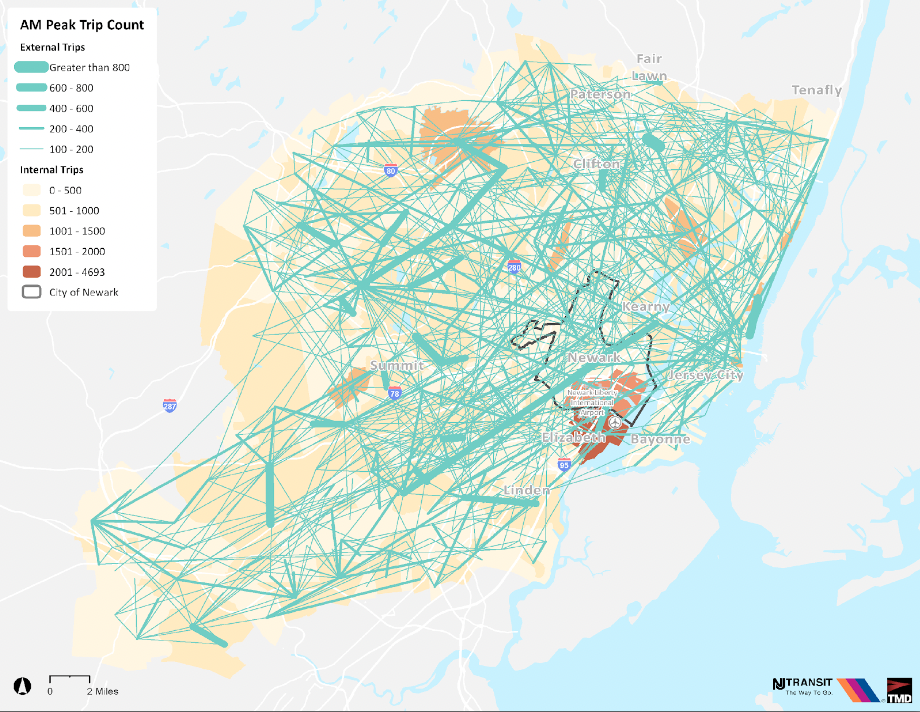Transit Demand & Equity Scores
High-quality data is essential to the creation of more equitable transportation systems. Granular, multi-dimensional, and privacy-preserving data — with detailed attributes on demographic and socioeconomic factors — can make the difference between equity aspiration and equity action.
Replica’s unique data on people and mobility activity supports the journey toward more equitable transportation networks. Within a few clicks, Replica data can reveal meaningful insights about the mobility needs of demographic, socioeconomic, and geographic cohorts of the population. Our privacy-safe approach gives customers confidence that they can prioritize the needs of local communities and provide evidence for how IIJA projects meet federal Justice40 guidelines.
- Study mobility activity of people who don’t own cars
- See how well transit serves people for work, shopping, errands, and other trip purposes
- Identify opportunities to reduce car reliance and enhance active transportation
- Analyze site locations to understand how workers and consumers travel to, from, or near a place of interest
- See how the existing transportation network connects disadvantaged and underserved communities to education, health care, food, and other basic needs
- Assess exposure to transportation emissions at the local level with data on residential VMT and freight travel activity
- Integrate Replica’s granular mode-split data with local crash data for novel analyses on pedestrian risk
- Disaggregated data and multivariable analyses allow you to drill down into your communities’ activities and needs like never before
- Upload custom geographies (including Justice40 Disadvantaged Community maps) to ensure your projects meet Justice40 + BIL equity guidelines
- Replica data can help you achieve What Works Certification for Data-Driven Decision-Making, which focuses on equity

Replica is the only company offering composite disaggregated datasets that enable you to analyze individual trip characteristics and the sociodemographic and socioeconomic traits of people making those trips (e.g., age, race/ethnicity, income, home location, work location).
Use Cases
Learn about Replica's Work with Transit Demand & Equity
App Details
Replica has released two new metrics designed to empower transit agencies in adapting to today’s evolving landscape:
TRANSIT DEMAND SCORE: Answers questions about where demand for service is highest and where it would be most utilized if made available.
TRANSIT EQUITY SCORE: Answers questions about the existing public transit system and how it serves the portion of the community that utilizes transit the most.Agencies can use these metrics to answer questions such as: How well does my existing network cover the areas of my city with the highest transit demand? To what extent do existing transit stops provide connectivity (e.g., access to jobs and essential services) for the most burdened portions of our population? Where do high transit demand and disadvantaged communities overlap to identify the potential for enhancing last-mile connections?
